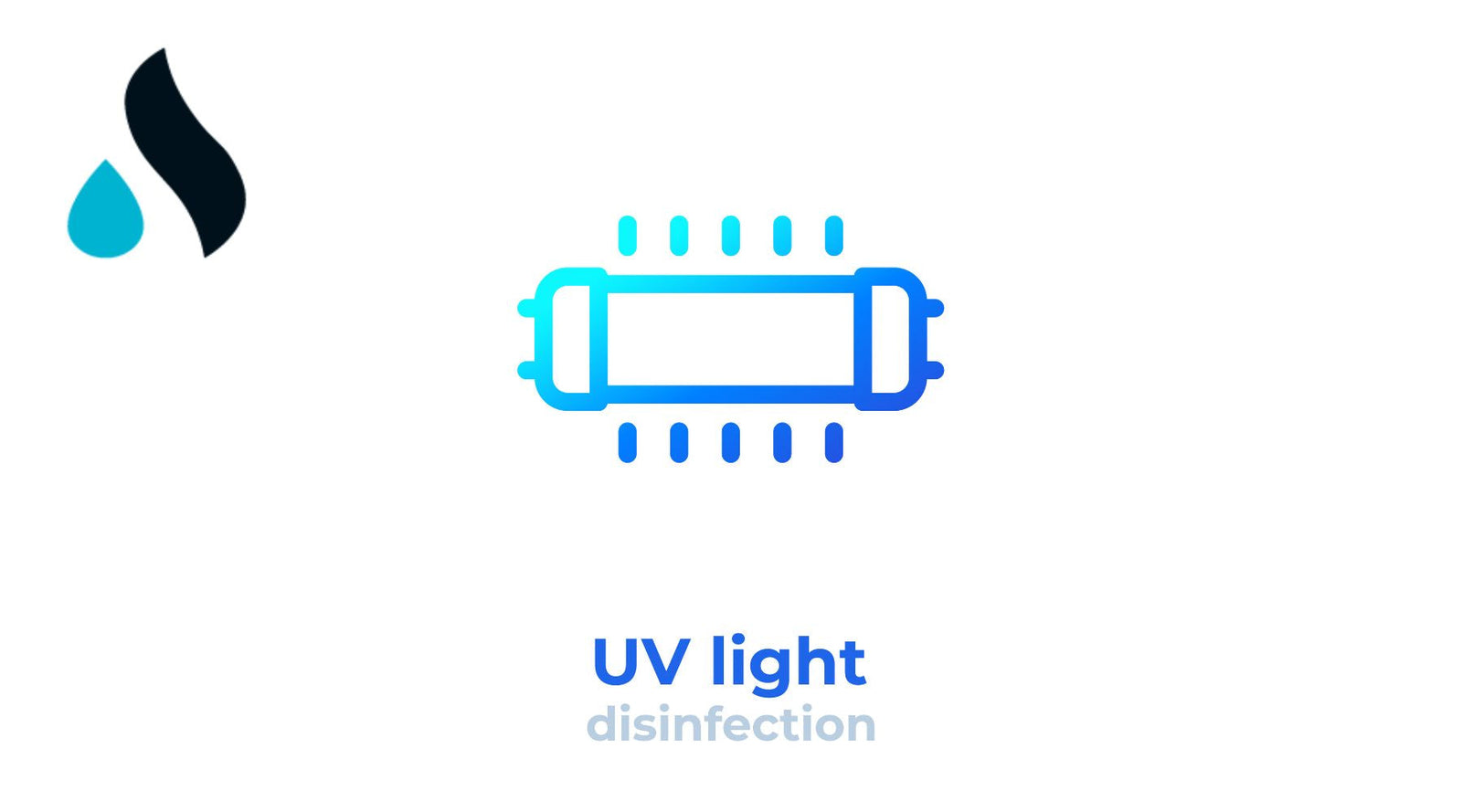Your Cart is Empty
CYBER MONDAY SALE ENDS THIS WEEK I 20% OFF STOREWIDE
Menu

Have a question? Call us 7 days a week!
CYBER MONDAY SALE ENDS THIS WEEK I 20% OFF STOREWIDE
Do UV Water Filters Work? A Complete Guide to UV Water Purification
January 28, 2025 5 min read

Are UV Water Filters Worth It? Let's Hear from The Experts
As water quality and safety concerns grow, many homeowners are looking into different water purification methods. UV water filtration has become a popular option but there are still questions about its effectiveness. Let’s get into how UV water filters work and if they’re worth the investment.
What is UV Water Filtration
UV water filtration uses ultraviolet light, specifically UV-C rays, to kill water. UV light filters work by exposing bad bacteria to UV light which breaks their DNA structure so they can’t reproduce and effectively kills them. Think of it as an invisible shield that kills bad organisms as water goes through the system.
A typical UV water filtration system has a UV lamp in a sleeve, a control module and a chamber for the water to flow through. The system is installed at the point of entry to treat all water coming into your home.

How Do UV Water Filters Work?
UV water purification operates by harnessing the power of ultraviolet (UV) light to neutralize harmful microorganisms in your water supply. The core component of this system is the UV lamp, which is encased in a protective quartz sleeve. As water flows through the UV system, it is exposed to UV light, specifically UV-C light, which has a wavelength of 254 nanometers. This particular wavelength is highly effective at penetrating the DNA of microorganisms, such as bacteria, viruses, and protozoa, disrupting their genetic material and rendering them incapable of reproduction or causing harm.
The process is straightforward yet powerful. When microorganisms are exposed to UV-C light, their DNA absorbs the light, causing damage that prevents them from multiplying. This method is effective against a broad spectrum of pathogens, including those that are resistant to chemical disinfectants.
One of the significant advantages of UV water purification is that it is a chemical-free process. This means no additional chemicals are introduced into your drinking water, making it a safe and environmentally friendly option. Moreover, UV systems are relatively low-maintenance, with the primary upkeep involving the replacement of the UV lamp every 12-18 months, depending on the manufacturer's guidelines. This ensures that your UV water purification system continues to operate at peak efficiency, providing you with safe, clean water.
What UV Water Filters Can and Can’t Do
UV water filtersare great at what they’re designed for – killing microorganisms.
They’re good at:
-
Bacteria (99.99% kill rate)
-
Viruses (including those that are chlorine resistant)
-
Parasites like Giardia and Cryptosporidium
This process, known as UV water disinfection, is highly effective against bacteria, viruses, and parasites.
But they can’t:
-
Remove chemical contaminants
-
Remove dissolved solids
-
Improve water taste or odor
-
Clear cloudy water

Scientific Proof of UV Filter Effectiveness
Research proves UV water filter effectiveness. EPA and water quality organizations have tested and shown that UV treatment can kill more than 99.99% of bad microorganisms when properly installed and maintained.
The technology is so reliable it’s used in municipal water treatment plants around the world, New York City has one of the largest UV water treatment facilities in the world and treats over 2 billion gallons of water a day.
What Affects UV Filter Performance
Your UV filter’s effectiveness depends on:
Water Quality: Clear water is required for UV to work. Cloudy water can shield microorganisms from UV light and reduce effectiveness. A sediment filter can help by capturing suspended particles and impurities before the water reaches the UV system, thereby enhancing its effectiveness.
Flow Rate: Water needs to be exposed to UV light for a certain amount of time. Too high a flow rate can reduce treatment and too low a rate wastes energy.
System Maintenance: Regular maintenance is key. UV lamps need to be replaced annually and quartz sleeves need to be cleaned periodically to work optimally.

Types of UV Systems
When it comes to UV water treatment, there are several types of UV systemsavailable, each tailored to different needs and applications. Understanding the various options can help you choose the right system for your specific requirements.
-
Point-of-Use (POU) UV Systems: These compact systems are designed to treat water at a single point of use, such as a kitchen sink or a drinking fountain. They are easy to install and ideal for ensuring that the water you consume directly is free from harmful microorganisms.
-
Point-of-Entry (POE) UV Systems: Unlike POU systems, POE systems are installed at the main water line entering your home or building. This means they treat all the water that flows through your plumbing system, providing comprehensive protection against biological contaminants throughout your entire water supply.
-
Whole-House UV Systems: These systems are similar to POE systems but are specifically designed to treat all the water used in a home, including water for drinking, cooking, and cleaning. They are typically larger and more complex, ensuring that every drop of water in your household is safe.
-
Portable UV Systems: Perfect for on-the-go water purification, portable UV systems are designed for use in various settings, such as camping trips or emergency situations. They are lightweight, easy to carry, and can quickly treat small quantities of water, making them a versatile option for outdoor enthusiasts and emergency preparedness.
-
UV Systems with Multi-Stage Filtration: For those seeking comprehensive water treatment, these systems combine UV light with other filtration methods, such as sediment filters or reverse osmosis systems. This multi-stage approach ensures that your water is not only free from harmful microorganisms but also free from other contaminants like sediments and dissolved solids.
By understanding the different types of UV systems available, you can make an informed decision that best suits your water treatment needs, ensuring safe and clean water for you and your family.

Applications
UV water filtration is used in many settings. In homes it’s popular for well water treatment where bacterial contamination is a big concern. UV filters are also beneficial in compromised water sources due to contamination. Commercial applications are restaurants, hospitals and food processing facilities where water safety is critical.
Advantages of UV Water Filtration
UV filtration has many benefits:
-
Chemical free treatment means no byproducts
-
Less maintenance than chemical treatment systems
-
Lower long term operating costs
-
Instant treatment without affecting water taste or chemistry
-
Environmentally friendly with no toxic chemicals released
UV light water systems provide instant treatment without affecting water taste or chemistry.
Disadvantages and Limitations
Despite the benefits UV filtration has some drawbacks:
-
Needs electricity to run
-
Requires pre-filtration in most cases
-
No residual protection after treatment
-
Initial cost can be high
-
Not effective against non-biological contaminants
Installation and Maintenance
Most homeowners choose to have water filtration systems installed professionally to ensure proper setup.
A typical installation includes:
-
Pre-filter installation
-
UV chamber mounting
-
Electrical connections
-
System testing
Maintenance is relatively simple:
-
Annual lamp replacement
-
Quarterly sleeve cleaning
-
Regular pre-filter changes
-
System monitoring

Choosing the Right One
UV water filtration works best as part of a whole house water treatment systems. Consider UV filtration if:
-
Your water source is prone to biological contamination
-
You want chemical free water treatment
-
You have pre-filtration in place
-
You will maintain the system
Conclusion
UV water filters do work – and work great for what they are intended to do – kill biological contaminants. But effectiveness depends on proper installation, maintenance and understanding their limitations. For many homes especially those on well water or concerned about microbiological contamination UV filtration can be a good investment in water safety.
Keep in mind UV filtration works best as part of a whole water treatment system. Consider your water quality issues, maintenance requirements and budget when deciding if UV filtration is for you.
Whether you choose UV filtration or another option, the key is to make an informed decision based on your situation and water quality concerns. Regular water testing and proper system maintenance will keep your chosen solution providing safe water for your home.
Leave a comment
Comments will be approved before showing up.
